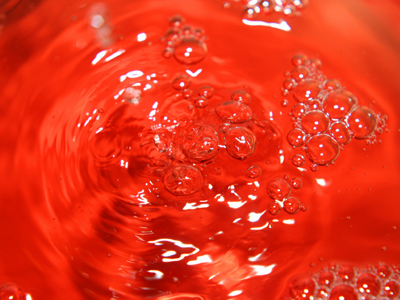In this, the second of our high school Chemistry quizzes on organic chemistry, we look at some of the different types of organic compounds, their structure and their properties. Organic compounds can be different shapes and can contain many different elements - as long as carbon and hydrogen are there, the compound is classified as being organic.
The simplest and largest group of organic compounds are the hydrocarbons, you will have learned about these when you studied crude oil. Aromatic organic compounds all have a distinctive smell and the carbon atoms in them are arranged in a ring rather than a straight line like the alkanes and alkenes that we have met before.
Carboxylic acids are weak acids. You can recognize them from their formulae because they end in -COOH or they match the general formula CnH2nO2. So CH3COOH would be a carboxylic acid, so would C3H6O2. They get their names from the number of carbons in the main chain for example, CH3COOH is ethanoic acid which is the chemical that gives vinegar its sour taste and acidic properties. C4H8O2 is butanoic acid as it has 4 carbons in the chain.
Do you see how the naming is working - use the same prefixes as for the alkanes and alkenes but add -ic acid to them. Some of them are stronger acids than others and a lot of the shorter chain molecules dissolve in water. They have a lot of reactions in common with the strong inorganic acids - sulfuric, hydrochloric and nitric. They can be neutralized by alkalis to form a salt and water - that is the basis of soap. The process of making soap is called saponification. The first soaps were made from animal fats but now are often made from vegetable oils like palm oil and olive oil. Fats and oils contain two parts to their molecules, a glycerol part joined to carboxylic acids.
The alcohols are another homologous series of chemicals, instead of ending in -COOH, they end in -OH. A homologous series is a series of organic chemicals that have similar properties and a general formula that applies to every single one of them. Alcohols are often volatile, inflammable and toxic chemicals that have many uses - we even drink one type of alcohol, ethanol. This is easily produced by fermentation, a process in which yeast grows, converting sugar to alcohol. Ethanol is the waste product and ultimately kills the yeast. It affects human metabolism and is therefore considered a drug - a legal recreational drug.
Alcohols and carboxylic acids react together to form yet another homologous series, the esters. During the reaction, the hydrogen of the -OH on the alcohol, combines with the hydrogen and oxygen of the carboxylic acid forming water in a reversible chemical reaction. The two original molecules are then joined together via the oxygen atom of the alcohol. The process is called esterification and you should be able to name the ester formed. These are very useful chemicals that can be used as solvents, in cooking as they are responsible for the tastes and smells of many fruits, in cosmetics and perfumes as they have a strong, pleasant smell. You may have some clothes that are made from polyester. Polyesters are long chain polymer molecules that can be woven together to make fabrics. It is even possible to recycle bottles made from polyester plastics to make fleecy clothing!








